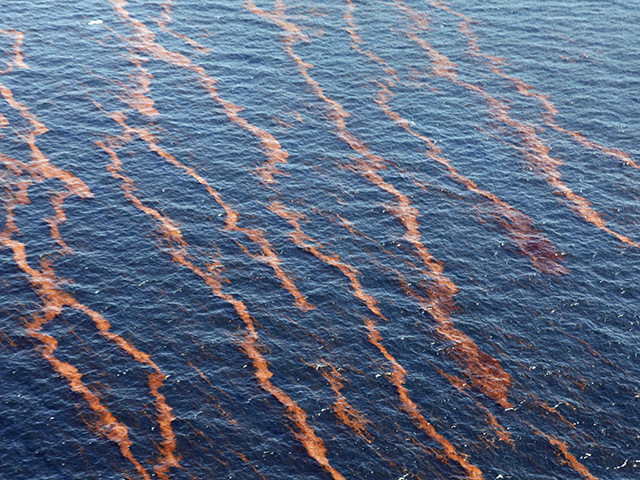
A deepwater oil spill in the north-east Atlantic could be more complex and difficult to combat than the Deepwater Horizon incident, according to new research.
Using a dispersant in the Faroe-Shetland Channel (FSC) after an oil spill would create a subsea “dirty blizzard” of marine oil snow (MOS) like that seen in the Gulf of Mexico in 2010, scientists said.
When tackling oil spills, operators often use dispersants which break up the oil and encourage it to degrade naturally.
But researchers at Heriot-Watt University in Edinburgh found use of a dispersant in the FSC after an oil spill would trigger conditions similar to the aftermath of Deepwater Horizon and the formation of MOS, which comprises sticky, floating organic particles that are visible to the naked eye and contain oil droplets from spills.
MOS sinks rapidly which removes much of the oil from the surface, leading observers to think the spill has been cleaned up, but it carries the oil to the seabed with potentially damaging effects on ecosystems.
Researchers warned a spill in the FSC could be difficult to deal with, and their report said: “We specifically focused on the FSC where subsurface oil extraction is currently occurring and where exploration for oil in deeper waters (below 1,000 metres) within this channel may expand in the near future.
“This is important given that an oil spill in the deep waters of the FSC could produce a similar oil spill as occurred during the Deepwater Horizon blowout in the Gulf of Mexico, and one that could be considerably more complex and difficult to combat given how much more hydrodynamic the FSC water column is compared to the Gulf of Mexico.”
Laura Duran Suja, a PhD student at Heriot-Watt who led the study, took surface seawater samples from the water mass known as the Modified North Atlantic Wester, near the Schiehallion oil field, and incubated them with oil under conditions simulating the sea surface.
Over six weeks, she studied the microbial response, including of the oil-degrading bacterial communities, and observed the formation of MOS in incubations treated with dispersant and/or nutrients.
Tony Gutierrez, associate professor of microbiology at Heriot-Watt, said more work is needed to understand existing dispersants and develop safer, more effective products to combat oil spills and minimise their impact on ecosystems.
He said: “The Faroe-Shetland Channel is at the frontier of deepwater petroleum exploration, so there is a pressing need for fundamental research in this region.
“The area is already home to oil rigs that are extracting oil at depths of down to 500 metres, and the region is being scoped for oil at much greater depths.
“The Faroe-Shetland Channel is the ’spaghetti junction’ of Icelandic, Norwegian and Atlantic currents and is much more hydrodynamic than the Gulf of Mexico, where the Deepwater Horizon spill occurred.
“The possibility of a deepsea spill in this area in the future cannot be discounted, so it’s vital we know how to respond.”
“We don’t know exactly what happens when the MOS arrives on the seabed, but given the fragility of sponge belts in the Faroe-Shetland Channel and other sensitive benthic communities, it’s not likely to be good.”
The research is published in Frontiers in Microbiology.